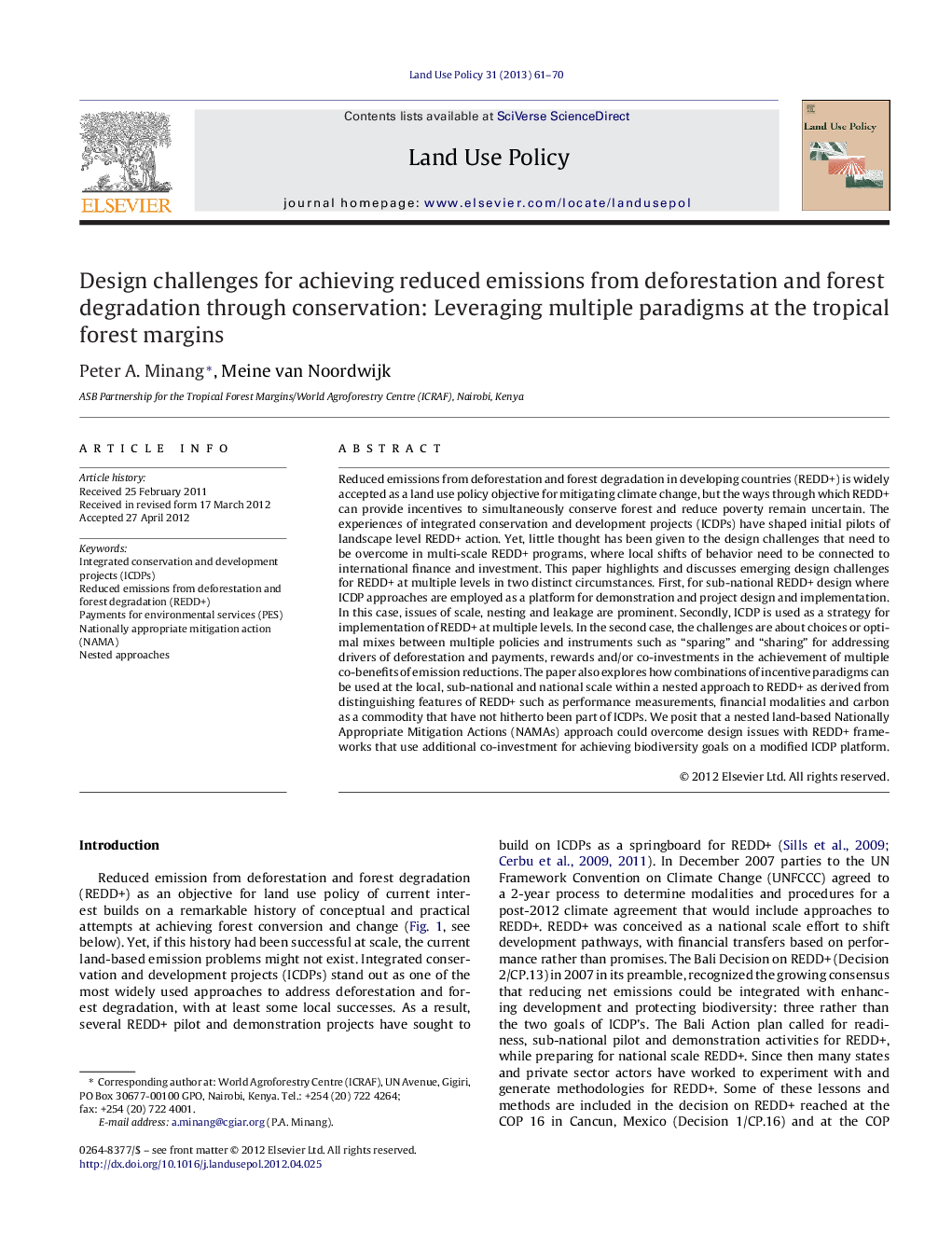| کد مقاله | کد نشریه | سال انتشار | مقاله انگلیسی | نسخه تمام متن |
|---|---|---|---|---|
| 93064 | 160112 | 2013 | 10 صفحه PDF | دانلود رایگان |
Reduced emissions from deforestation and forest degradation in developing countries (REDD+) is widely accepted as a land use policy objective for mitigating climate change, but the ways through which REDD+ can provide incentives to simultaneously conserve forest and reduce poverty remain uncertain. The experiences of integrated conservation and development projects (ICDPs) have shaped initial pilots of landscape level REDD+ action. Yet, little thought has been given to the design challenges that need to be overcome in multi-scale REDD+ programs, where local shifts of behavior need to be connected to international finance and investment. This paper highlights and discusses emerging design challenges for REDD+ at multiple levels in two distinct circumstances. First, for sub-national REDD+ design where ICDP approaches are employed as a platform for demonstration and project design and implementation. In this case, issues of scale, nesting and leakage are prominent. Secondly, ICDP is used as a strategy for implementation of REDD+ at multiple levels. In the second case, the challenges are about choices or optimal mixes between multiple policies and instruments such as “sparing” and “sharing” for addressing drivers of deforestation and payments, rewards and/or co-investments in the achievement of multiple co-benefits of emission reductions. The paper also explores how combinations of incentive paradigms can be used at the local, sub-national and national scale within a nested approach to REDD+ as derived from distinguishing features of REDD+ such as performance measurements, financial modalities and carbon as a commodity that have not hitherto been part of ICDPs. We posit that a nested land-based Nationally Appropriate Mitigation Actions (NAMAs) approach could overcome design issues with REDD+ frameworks that use additional co-investment for achieving biodiversity goals on a modified ICDP platform.
► Integrated conservation and development approaches inform REDD+ demonstration projects.
► REDD+ action require nesting across national, sub-national and project scales.
► Combinations between ‘sparing’ and ‘sharing’ paradigms are needed for land use intensification.
► Multiple paradigms of payments, rewards and co-investments are needed to balance efficiency and fairness.
► Land-based mitigation actions need to be nationally and locally appropriate, balancing benefits.
Journal: Land Use Policy - Volume 31, March 2013, Pages 61–70
